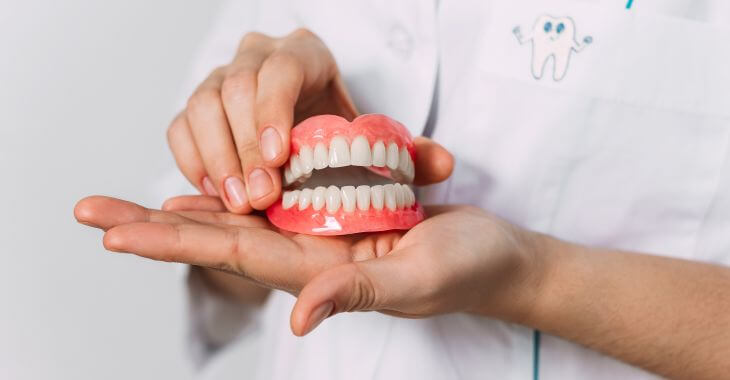Understanding Soft, Painless Lump on Gum Treatment

Discovering a soft, painless lump on gum can be concerning, but it is essential to remain calm and seek proper evaluation and treatment. While such lumps are often benign, it is crucial to understand the potential causes, symptoms, and treatment options associated with this condition.
In this informative article, we will explore the various factors that can lead to a soft, painless lump on the gum and provide insights into effective treatment approaches to address this issue.
Exploring Possible Causes
There are a few different possible causes of a soft, painless lump that appears on the gum. Some of these include:
- Mucocele: A mucocele is a harmless cyst that forms when a salivary gland duct becomes blocked or damaged, leading to the accumulation of saliva under the mucous membrane of the mouth. Mucoceles typically appear as small, painless bumps on the inside of the lips, cheeks, or gums.
- Fibroma: A fibroma is a benign growth of fibrous tissue that can develop on the gums due to irritation or trauma. Fibromas are typically firm to the touch and may vary in size and color. While fibromas are generally painless, they can cause discomfort if they interfere with chewing or speaking.
- Gingival Overgrowth: Gingival overgrowth, also known as gingival hyperplasia or gingival enlargement, occurs when the gum tissue becomes swollen or enlarged. This condition can be caused by factors such as poor oral hygiene, certain medications, hormonal changes, or underlying medical conditions.
- Epulis: An epulis is a non-cancerous growth that originates from the gum tissue and can occur in response to chronic irritation or inflammation. Epulides may present as smooth, painless lumps on the gum and can vary in size and appearance.
- Dental Abscess: A dental abscess is a pocket of pus that forms in the tooth or gums due to bacterial infection. While abscesses are typically associated with pain and discomfort, they can occasionally present as painless lumps on the gum, especially if the abscess is located deep within the tissues.
Recognizing Symptoms
If you have a growth that appears on your gum tissue, you may experience the following symptoms:
- Soft, painless lump or swelling on the gum
- Changes in the color or texture of the lump
- Difficulty chewing or speaking (if the lump interferes with oral function)
- Bleeding or discharge from the lump
- Sensation of pressure or fullness in the affected area
Options for Soft, Painless Lump on Gum Treatment
A soft, painless lump on the gum may resolve on its own without the need for intervention. If the lump is determined to be benign and does not cause any discomfort or functional impairment, your dentist may recommend monitoring the condition over time to ensure that it does not change or progress.
If the lump is causing functional impairment or other uncomfortable symptoms, the following treatments may be recommended by your dentist:
- Surgical Removal: If the lump is causing discomfort, interfering with oral function or is cosmetically bothersome, surgical removal may be recommended. During the procedure, the dentist or oral surgeon will carefully excise the lump to ensure complete removal and prevent recurrence.
- Dental Treatments: If the lump is an abscess or other type of infection, root canal therapy or even tooth removal may be recommended to treat the infection.
- Medication: In cases where the lump is caused by inflammation or infection, your dentist may prescribe medication such as antibiotics or anti-inflammatory drugs to help reduce swelling, alleviate symptoms, and promote healing.
- Laser Therapy: Laser therapy may be used as a minimally invasive treatment option for certain types of gum lumps, such as mucoceles or fibromas. Laser therapy can help remove the lump and promote tissue regeneration while minimizing discomfort and reducing the risk of scarring.
- Oral Hygiene Measures: Practicing good oral hygiene habits, such as regular brushing, flossing, and rinsing with an antiseptic mouthwash, can help prevent and reduce the risk of gum lumps and other oral health problems. Maintaining a healthy diet and avoiding habits such as smoking can also contribute to gum health.
When to Seek Medical Attention
While many soft, painless lumps on the gum are benign and harmless, it is important to consult a dentist or oral healthcare professional for proper evaluation and diagnosis. You should seek medical attention if:
- The lump persists or grows larger over time
- The lump is associated with pain, bleeding, or other symptoms
- You experience difficulty chewing, speaking, or swallowing
- You have concerns about the appearance or texture of the lump
- You have a history of oral health problems or underlying medical conditions

By understanding the potential causes, symptoms, and treatment options associated with gum lumps, you can take proactive steps to maintain optimal oral health. While many gum lumps are harmless and may not require treatment, it is essential to seek a proper diagnosis from a qualified dentist.
The information provided on this website, including text, graphics, images, and other materials, is intended solely for informational purposes and should not be used as a substitute for professional medical advice, diagnosis, or treatment.




)